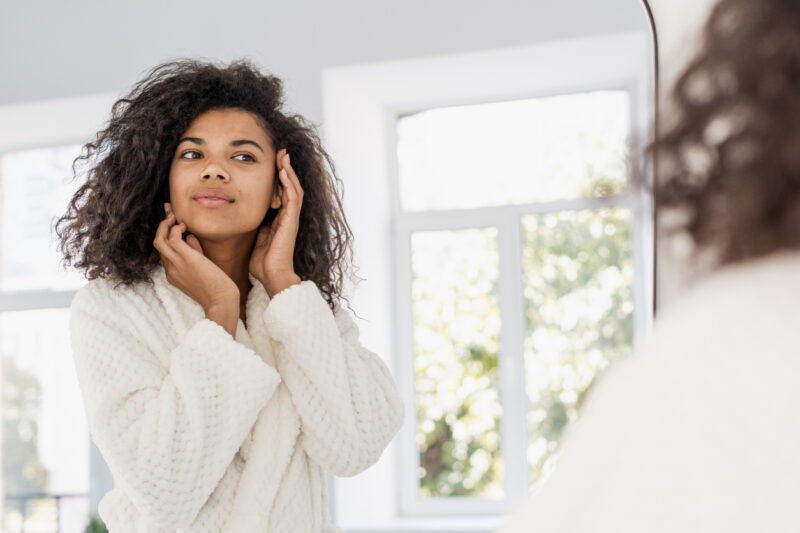What is Red Light Therapy?
Red light therapy is a treatment that uses low wavelength red light to reportedly improve your skin’s appearance, such as reducing wrinkles, scars, redness, and acne. It’s also touted to treat other medical conditions.
The discovery that light can be split into different wavelengths that have slightly different behaviors was made by Sir Issac Newton back in 1666. Many scientists studied the spectrum of light to understand the behaviors and properties of each color of light on the spectrum. These studies led to the revelation that different wavelengths of light can produce different results on the human body.
The idea that light could be used for medicinal healing was uncovered in 1893 by Dr. Neils Ryberg Finsen. Finsen discovered that laying out in the sun helped his symptoms associated with Pick’s disease. He later used red light to treat smallpox, and later lupus. He was awarded the Nobel Prize in Physiology or Medicine in 1903.
The Science Behind Smoother Skin
Red light therapy is thought to affect the mitochondria in the cells in the human body. The mitochondria are the “power plants” of the cells, absorbing the light and producing energy. With more energy, the cells can work more quickly and efficiently – allowing for new cell growth and repairing cells from the inside out, resulting in smoother looking skin without damaging the outer layer of skin.
Red light therapy may help the body to:
- Stimulate collagen production, which gives skin its structure, strength and elasticity
- Increase fibroblast production, which makes collagen. Collagen is a component of connective tissue that builds skin
- Increase blood circulation to the tissue
- Reduce inflammation in cells
Red light therapy is effective without being invasive, which is pleasant news for anyone interested in skincare options. Red light is thought to penetrate the skin about 5 millimeters without any thermal damage. This means that red light therapy activates skin regeneration without burning or damaging the top layer of skin like many laser treatments do.
Does red light therapy work?
There is an emerging body of research that shows the potential of red light therapy to help improve skin health and treat certain skin conditions. A 2014 study that showed that light therapy led to improved skin complexion and feeling, reduction of skin roughness and wrinkles, and increased collagen density.
What You Can Expect from a Red Light Therapy Session
Red light therapy sessions are relatively short, – 10-20 minutes – non-invasive, and pain free. Red light panels focus on one area of the body at a time. You simply turn on the panel, aim it at the area of the body you want to treat, and relax for the 10-20 duration of the treatment. Red light beds are also an option, and they allow your whole body to reap the benefits of the red light, not just one area at a time.
You should wear eye protection when receiving red light therapy as the lights are bright. Many say that a red light therapy session induces relaxation and is very soothing. Depending on the wrinkles and fine lines you are treating with red light therapy, the number of sessions needed to see results will vary.
Advantages of Red Light Therapy
Although red light therapy is relatively new in popularity as a wrinkle reducing agent, it has been clinically studied and is FDA approved for the treatment of wrinkles, fine lines, acne, and other noticeable signs of aging.
Red light therapy is also noninvasive, pain free, and does not have any side effects. Compared with other wrinkle and fine line reducing treatments, red light therapy is easier to use and results in zero downtime–you can receive red light therapy and go on with your day as if nothing occurred.
Red light therapy is also convenient to use. Many red light therapy instruments are FDA approved, and are available on the market for at-home use. At-home use allows you to incorporate your red light therapy sessions into your everyday life without appointments, reminders, etc.
—
Interested in what red light therapy can do for you and your skin? Contact 10X Health to find out more!
